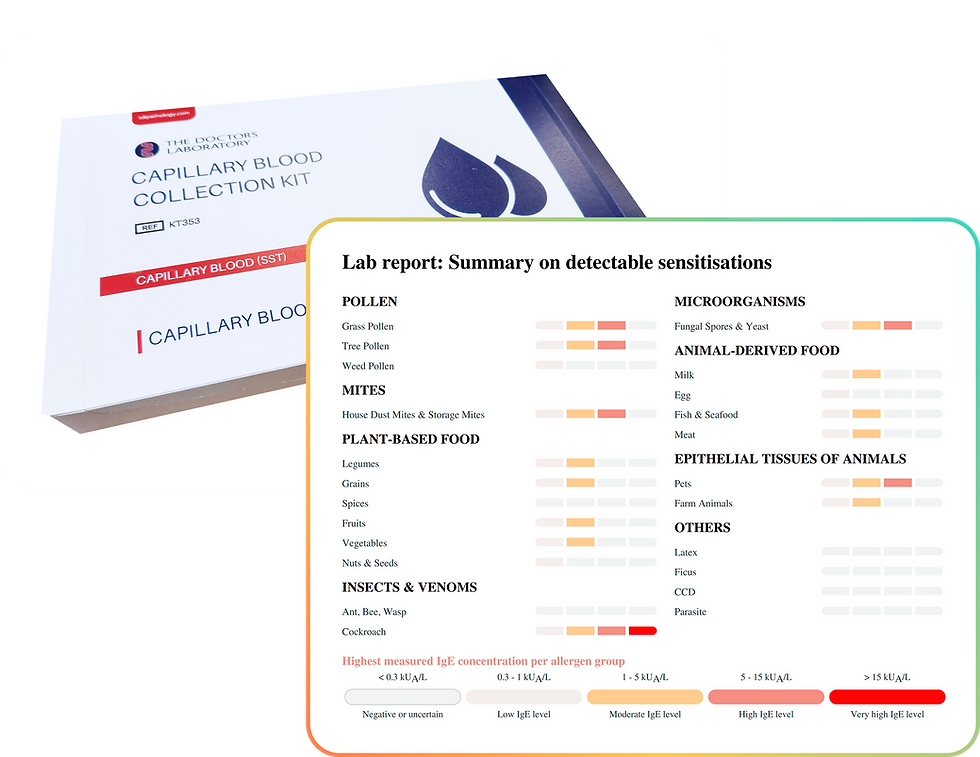Early pollen = early symptoms: How to manage tree pollen allergies before they peak
- AllergyRhino

- Mar 27
- 3 min read
If you’ve started to feel the itch in your eyes or that telltale tickle in your throat, you're not imagining it. Tree pollen season is already underway in the UK—and for allergy sufferers, that means it’s time to act now.
Many people associate hay fever with the height of summer, but for a significant portion of the population, symptoms start much earlier, as tree pollen begins to rise in late March. Acting early can make a real difference in how mild or severe your spring season feels.
What trees are causing allergies right now?

In the UK, tree pollen season typically runs from late March to mid-May. The earliest culprits are hazel, alder, and elm, followed by birch, which is one of the most allergenic trees for people in the UK.
By the end of March, birch pollen is beginning to rise—if you’re sensitive to it, symptoms can hit hard and fast.
Common tree pollen symptoms
Even if you’ve never had “hay fever” in the traditional sense, you might notice some of these early-season signs:
Sneezing, especially outdoors
Itchy or watery eyes
Runny or blocked nose
Itchy throat or ears
Fatigue or brain fog on high pollen days
Because tree pollen tends to be airborne and fine, it can travel easily—even into cities and indoor spaces—making avoidance tricky.
Why now is the time to start treatment
Most people wait until their symptoms are in full swing to reach for antihistamines or nasal sprays. But that’s often too late to stop the inflammatory cascade that leads to miserable months.
Here’s why early action matters:
Antihistamines work better when taken before exposure.
Nasal corticosteroids take a few days to build up effectiveness—starting now means better control during peak season.
If you’re considering sublingual immunotherapy (SLIT), the sooner you start, the more effective it can be in reducing symptoms long term. Take our quick allergy assessment form to see if you're eligible.
Quick tips for managing tree pollen allergies in early spring
Track pollen levels: Use pollen apps updates to monitor daily counts.
Keep windows closed, especially in the early morning when pollen counts are highest.
Shower and change clothes after being outside to remove pollen particles.
Rinse your nose with a saline spray to clear out allergens.
Start your medications now, even if your symptoms feel mild—it helps prevent the season from escalating.
You can also check out our allergy record for a step-by-step guide on which treatments to try next:

Considering long-term options?
If your allergies get worse every year, or you're tired of relying on daily tablets, you might be a candidate for SLIT (sublingual immunotherapy). It’s a once-daily tablet that helps retrain your immune system to become less reactive to pollen over time. Many people find their symptoms significantly reduced within the first year, with long-term benefits that can last even after treatment ends.
Curious about what’s causing your symptoms? Our comprehensive allergy blood test screens for +295 allergens, including tree pollen, grass and weed pollen, mites, cat and dog, fur, insect venoms, moulds, yeasts, food and latex, helping you pinpoint triggers and find long-term relief. Learn more today!



Comments